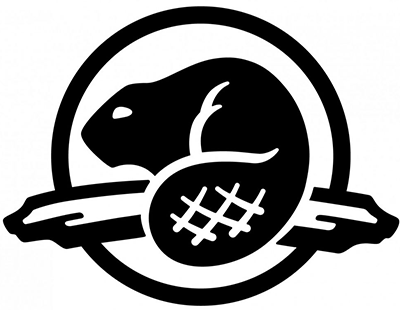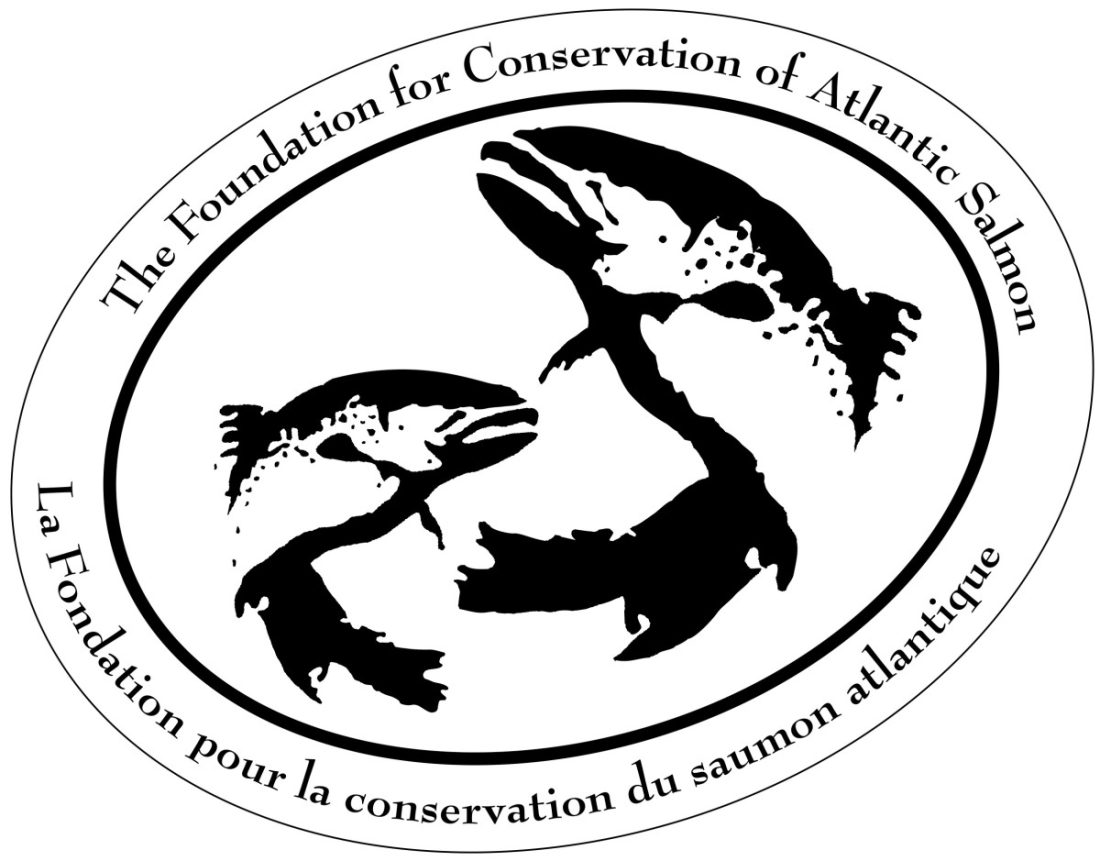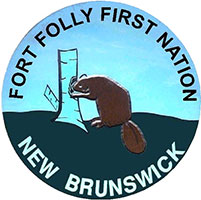Atlantic Salmon/Salmo salar
SARA Listed- Endangered: As little as 30 years ago, the river systems in New Brunswick and Nova Scotia that are connected to the Bay of Fundy, were thriving with salmon that would instinctively migrate to these pristine rivers (to their birth river) and spawn (reproduce). After spawning, they migrate out to the Bay where they stay 1-2 winters and when instinct draws them back, they start their journey home to spawn.
But what makes these salmon different is that they are a unique sub-species of the Atlantic salmon. Unlike those born in the rivers on the outer Bay of Fundy, which include those salmon populations on the Eastern Coast of North America, few iBoF (inner Bay of Fundy) Atlantic salmon go on long winter migrations that their cousins travel, which means that they stay within the mouth of the Bay of Fundy and in the adjacent Gulf of Maine through the duration of the winter. These waters have a plentiful abundance of shrimp-like invertebrates, young herring and other smaller fish that they enjoy eating.
Using genetic markers, scientists have discovered that iBoF salmon are of two distinct stocks – one stock
originates in the rivers of Minas Basin and the other in the rivers of Chignecto Bay. There are two Biodiversity Facilities that house iBoF Atlantic salmon families that represent approximately 10 rivers. Coldbrook, Nova Scotia, maintains the Gaspereau and Stewiacke River populations and Mactaquac, New Brunswick, maintains the Big Salmon River population.
Their outer Bay of Fundy salmon cousins migrate with the currents of the North Atlantic and the range in which these salmon travel is known to stretch as far as the Faroe Islands (a range of Islands claimed by Denmark located between the United Kingdom and Iceland), over across to Greenland, down to the coast of Newfoundland and Labrador, and then migrate down the eastern seaboard to their river of birth for the summer months.
The juvenile Atlantic salmon that have been reintroduced into tributaries of the Petitcodiac River require special attention since they can easily be mistaken for brook trout at a certain life-stage. Juveniles will spend 2-3 years in freshwater as smolts before migrating to the ocean. This is the stage in the life cycle where we intervene and capture a portion of out migrating smolts in a smolt wheel, also known as an RST (rotary screw trap). They are held in a live box until transport to the Huntsman in St.Andrews and are then transported to Blacks Cove in Grand Manan. They grow out here for the next 16-18 months until their release back into the river as an adult to spawn.
American Eel/Anguilla rostrate
COSEWIC Designation – Special concern. Like the Atlantic salmon, eel is a fish that is greatly woven into the way of life for First Nations’ people, a way of life that the youth of Fort Folly are eager to reclaim. In 2006 the American eel was listed as a species of Special Concern and as a result, the community of Fort Folly felt it was important to become involved in efforts to prevent the eel from becoming more at risk. Fort Folly works on projects involving elvers and yellow eels which aim to gather information on abundance, habitat use, and recruitment of juveniles into the rivers. Many of the American eel are caught through our smolt wheels, the fish net trap on the Petitcodiac River, the smolt wheel on the Pollett River and also through electrofishing. This species differs in appearance according to its life-stage. It reproduces at sea and lives in freshwater, saltwater or a combination of the two. They are very common in our watershed.
American Shad/Alosa sapidissima
No official status: Although the American shad has been observed in the river’s estuary below the causeway and is still present in other rivers in the upper Bay of Fundy, it requires freshwater areas for spawning. With ongoing restoration efforts, this species which formerly spawned in the Petitcodiac now has a better chance of returning to the rivers freshwater reaches. Furthermore, this species is believed to be one of the primary host species for the extirpated dwarf wedgemussel. Reestablishment of this mollusc in the Petitcodiac River could depend on the shads return. Therefore, it becomes important to be able to differentiate between American Shad and gaspereau, which are somewhat similar in appearance.
Atlantic Sturgeon/Acipenser oxyrhinchus
COSEWIC Designation – Threatened: This anadromous species prefers soft-bottomed estuaries and coastal waters and large freshwater systems with rocky areas and fast-flowing water for spawning. Although this species is not known to spawn in the Petitcodiac, it was historically fished and is still observed in the lower estuary.
Striped Bass/Morone saxatilis
COSEWIC Designation-Threatened: Striped bass are more commonly associated with estuaries and coastal waters and like the sturgeon, they have not been known to spawn in the Petitcodiac. They often enter the watershed to feed on gaspereau and smelt. However, rivers and estuaries are considered to be in a good condition if there is an abundant population of this species. They are caught in the fish net trap on the Petitcodiac River and the fyke nets.
Wood Turtle/Glyptemys insculpta
SARA Designation-Endangered: In New Brunswick, the number of populations is unknown but they are believed to occupy several watercourses. They are a freshwater species that require the water for hibernation, mating and temperature regulation. This species is associated with rivers and streams with sandy or gravely-sandy bottoms and prefers clear meandering watercourses with a moderate current. The Wood Turtle’s natural nesting sites are found on sand or gravel-sand beaches and banks. Although they prefer riparian areas with diverse, patchy cover, females also lay in gravel holes, at the edges of roads and railways, in utility right-of-ways, in farming fields, pastures and former fields – any sunny and easily dug spot. We have spotted a few turtles in and around our work areas and have worked with the Petitcodiac Watershed Alliance conducting turtle surveys.
Other Species: these are not under any designation but are species we encounter either in the fish net trap, smolt wheel or through electrofishing.
- Atlantic Tomcod/Microgadus tomcod
- Brown Bullhead/Ameiurus nebulosus
- Brook Trout/Salvelinus fontinalis
- Chain Pickerel/Esox niger
- Rainbow Smelt/Osmerus mordax
- Sea Lamprey/Petromyzon marinus
- Small Mouth Bass/Micropterus dolomieui
- White Perch/Morone americana
- White Sucker/Catostomus commersoni












